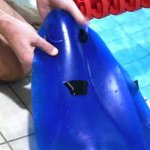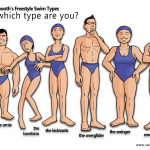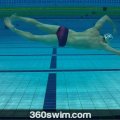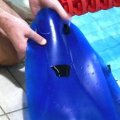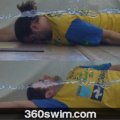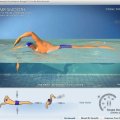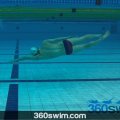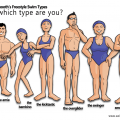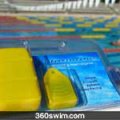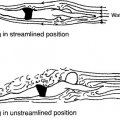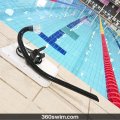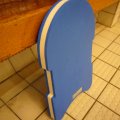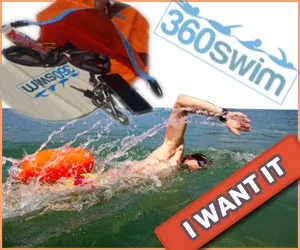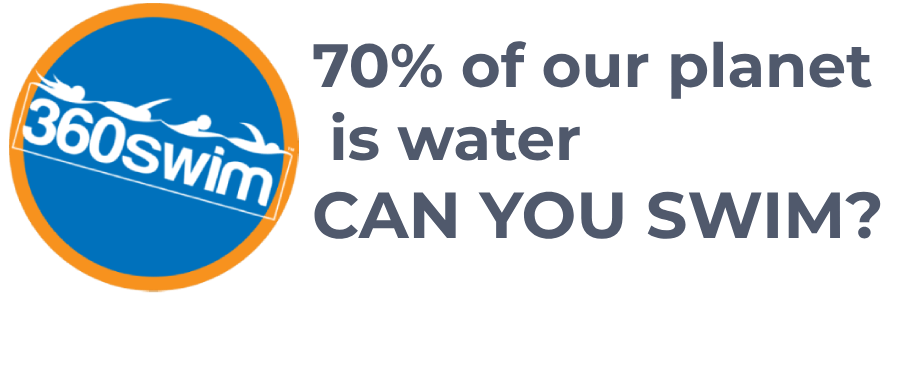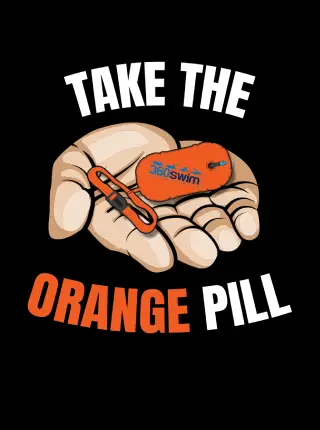LEARN THE FLUTTER KICK BY DOING IT WRONG (FREESTYLE SWIM KICK EXPLAINED)
The freestyle flutter kick is the engine of your stroke. A proper kick provides propulsion, lift, and balance, but it's also one of the hardest swimming skills to master.
This guide will break down the mechanics of an effective flutter kick, using analogies and a unique "learn-by-doing-it-wrong" approach to help you finally feel the correct motion.
Dive Into: Your Guide to the Freestyle Flutter Kick
- The Basic Principle: Kicking Up and Down
- The "Garden Hose" Whip: From Hip to Toe
- Learn by Doing it Wrong
- The Secret Weapon: Relaxed Ankles
- Keeping it Narrow: The Bucket Analogy
- Helpful Gear to Improve Your Kick
- Frequently Asked Questions
The Basic Principle: Kicking Up and Down
I’ve taught countless individuals with varying skill levels and everyone is different in the way they understand how the kick should be performed.
Some get it right away and they move on in their swimming skill learning program, others struggle with the right leg motion which hinders their progress during the other swim exercises.
Unfortunately, everyone learns in a different way so there is no single technique or sequence of drills which will work for everyone.
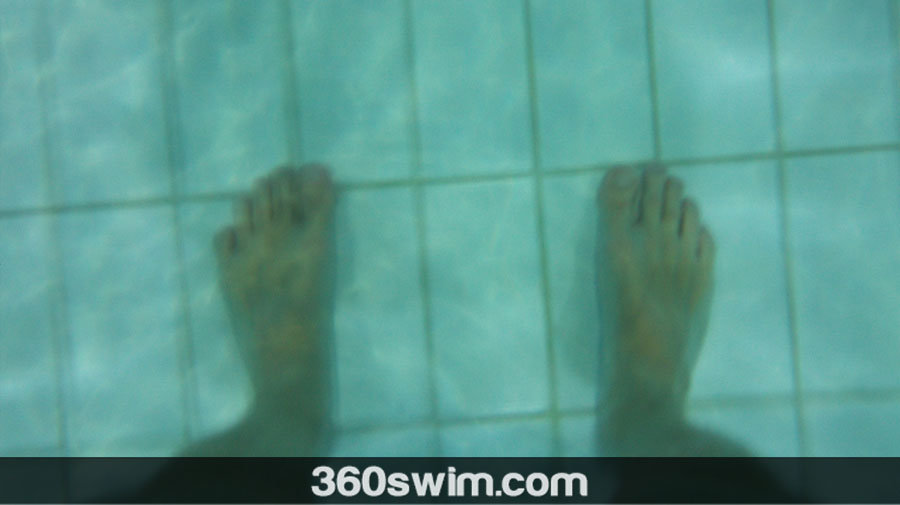
Before you start, it is important you understand what it is that propels you forward.
Many beginner swimmers start by using the so-called "bicycle kick" which causes the swimmer to kick water backward in the opposite direction to where they want to go.
As much as it makes a logical sense to kick the water behind you, it will get you going very slowly and it is very bad in terms of efficiency and effectiveness. Most importantly, it does a horrible thing to your proper swimming body position.
So, where else can you kick the water if not behind you? Well, how about down and up.
Think about a fish and its tail. So, pointer number one is to make sure you kick down and up and not only behind you.
You can visualize a dolphin swimming with the caudal fin moving up and down to propel it forward.
A word of caution here though, do not get into the habit of kicking to the sides instead of up and down as you will end up with a so-called scissor kick which is ugly and inefficient.
The "Garden Hose" Whip: From Hip to Toe
Now you know a part of the very basic principle of how you go forward during flutter kick, but like everything in swimming, it is not that simple.
Let's break it down a little bit more.
Freestyle kick actually utilizes the entire leg from hip to toe.
Each part of the leg plays a specific part in your kick movement.
As you might have guessed, the kick starts from the hip and continues to the knee and then finishes with a relaxed ankle.
Imagine a garden hose. Grab one end and start moving your arm up and down. This movement will produce a series of snapping waves that travel down the hose. Each of the waves is basically one kick. It starts at your hip, continues through your knee, and finishes at the ankle.
Another analogy could be taken from football (soccer) where the player starts the kick with his hip motion, then knee, then ankle.
Obviously, the garden hose waves are much larger than the actual kick, but you get the picture, right?
Another great analogy is kicking a football (soccer ball). The player starts the kick with their hip motion, then the knee extends, and finally, the ankle and foot connect with the ball. Your leg should move in a similar, flowing sequence.
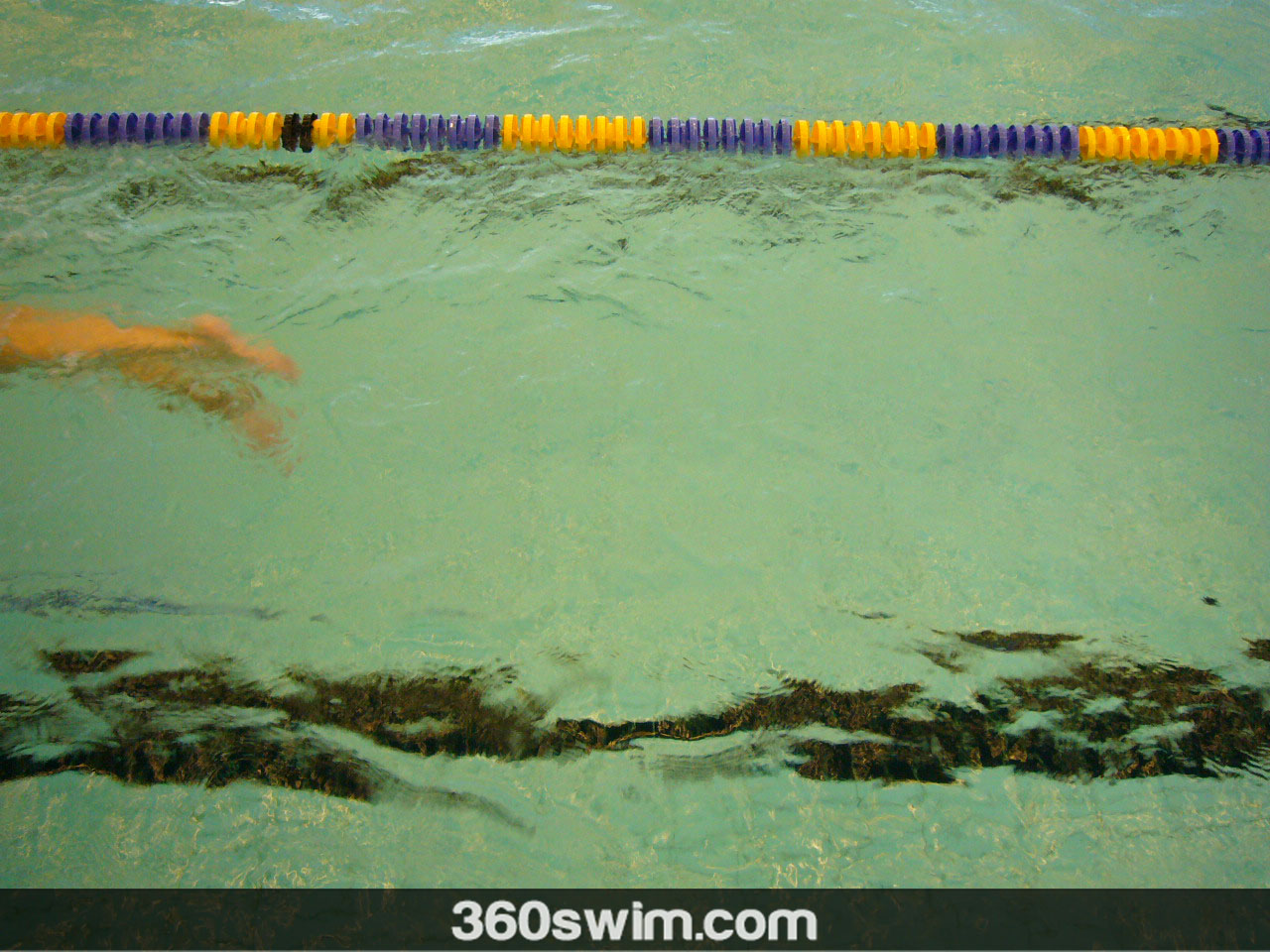
Learn by Doing it Wrong
Now, you hopefully have a little better understanding of how the flutter kick is performed. However, it is much easier said than done, so practice practice practice.
To practice the motion, you should first try the wrong approach, so you can feel how it should not be done.
You have already tried the bicycle kick as I mentioned above and probably the scissor kick, so you know how they feel. Bad. Very bad.
Try kicking only from your knees. Pretend as if you are laying on the floor face down and you bend your knee with your heel to your butt and then kick down with your foot to the ground and continue doing so.
You will feel certain propulsion forward, but you also find that you are forced to lift your feet out of the water which forces your lower body further down into the water which is not an ideal body position.
Then you can try the other extreme, where you try kicking with straight knees and only with your hips.
You will find that with this kick you will not go anywhere and your legs will more than likely quickly kick themselves all the way to the bottom of the pool.
If you combine these two wrong kick types (hip only and knee only) and meet somewhere in the middle, you should be very close to having the right kick.
Try starting out with straight legs and only using your hips to kick and then slowly loosen up your knee joint, so your leg from the knee down gives in a little when you kick down.
🎥 Watch: Examples of Common Kicking Flaws
In the video below you will see a few different kicking styles. Some worse than others, but recognizing the wrong mechanics is the first step in having a good kick.
The Secret Weapon: Relaxed Ankles
Did I mention that during the flutter kick, your ankle should be relaxed and your toes always pointing toward the opposite direction of where you are going?
Well, now I have.
Keeping your ankle relaxed throughout the kick is important as it increases the flexibility of the ankle and maximizes the surface of your foot so you can kick more water.
Try it out. Do a freestyle kick with a very tight ankle as if you were a ballerina. Then perform a kick with a loose ankle and see the difference.
To better understand how big a role ankle flexibility and relaxation plays in the freestyle kick, perform a kick where you point your toes to the bottom of the pool so you have a 90-degree angle in your ankle.
This definitely does not work, does it?
Keeping it Narrow: The Bucket Analogy
Last, but not least, you might be wondering how wide the kick should be.
Easy as 1, 2, 3! Just imagine that your feet are in a bucket and you cannot kick past the outer perimeter.
So we are talking about 30 cm or 12 inches apart at most. Stay away from spreading your legs like wings of a bald eagle.
Helpful Gear to Improve Your Kick
There are a couple of great tools that you can use to improve your kicking.
First, forget about the kickboard (shove it back into your closet and never take it out). Do all the kicking in a tree log position or on a side.
Second, you can use special fins that help you with balance and with lifting your hips to the surface. These leg fins are called Shinfins.
🎥 Watch: Shinfins in Action
Finally, if you have mastered the basics, why not try out zoomers. Zoomers will add more power to your kick.
🎥 Watch: Kicking with Zoomers
I've covered only the basics here, so rest assured there is a bit more to freestyle kicking than just what is written in this post, however, if you master the kicking basics, the rest is much, much easier to learn.
Frequently Asked Questions
What is the correct motion for the freestyle flutter kick?
The kick is a whip-like motion that starts from your hip, flows through your knee, and finishes with a relaxed, snapping ankle. The propulsion comes from kicking the water up and down, not backward.
What is the most common mistake beginners make with the flutter kick?
The most common mistake is the 'bicycle kick,' where swimmers bend their knees too much and try to kick water backward as if pedaling a bike. This is inefficient and ruins your streamlined body position.
Why is it helpful to practice kicking the 'wrong' way?
By intentionally trying to kick only from your knees or only with straight legs, you can feel why these movements are inefficient. This contrast helps you understand and find the correct, balanced kick that uses your entire leg.
How important is ankle flexibility in the flutter kick?
It is crucial. A relaxed, flexible ankle allows your foot to act like a fin, maximizing its surface area to push water. A tense or pointed ankle is ineffective and will not generate propulsion.
How wide should my flutter kick be?
Your kick should be very narrow. A good mental image is to imagine your feet are kicking inside a bucket. The total width should be no more than 30 cm (12 inches) apart.
What swim gear can help me improve my kick?
Avoid a kickboard. Instead, use your body's natural float. For specific help, Shinfins are great for improving body position and fixing sinking legs, while zoomers are excellent for building kicking power.
 LNURL1DP68GURN8GHJ7URP0YHRXD3SWDMKJMFWVDHK6TMVDE6HYMRS9A4HSCNCWFXSH3NN0H
LNURL1DP68GURN8GHJ7URP0YHRXD3SWDMKJMFWVDHK6TMVDE6HYMRS9A4HSCNCWFXSH3NN0H

